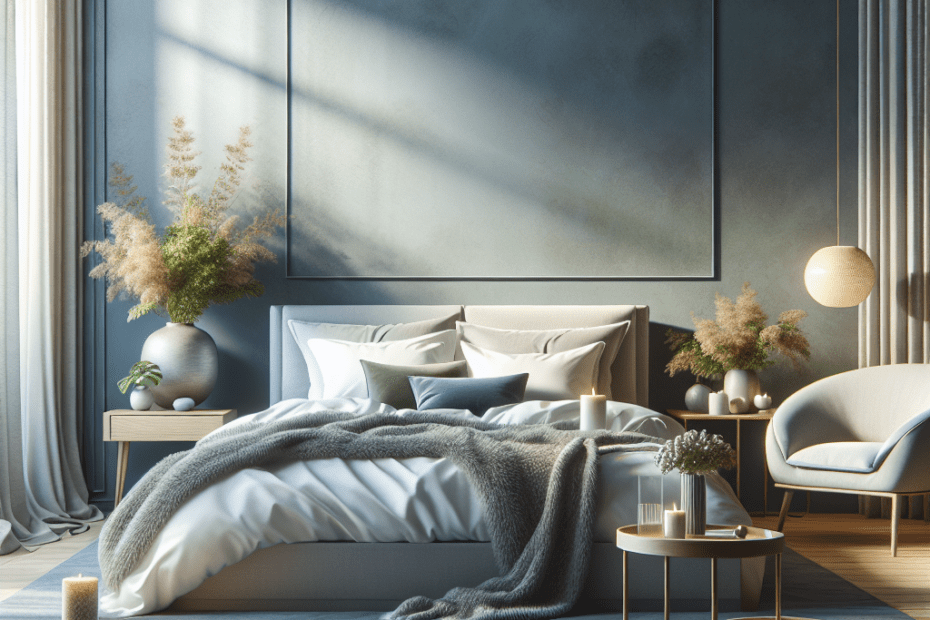“`html
The Best Color Schemes for Tranquil Bedrooms
When it comes to creating a restful bedroom atmosphere, they might be surprised to learn that color choices play a crucial role. Many people understand that colors can evoke emotions and influence moods, but they may not realize the full extent of this effect. According to a study from the Sleep Foundation, individuals sleeping in blue-colored rooms reported getting the best night’s sleep, averaging around eight hours. This highlights the importance of selecting Tranquil Bedroom Color Schemes that promote relaxation and serenity.
The Psychology of Colors
Colors in a bedroom are not merely for aesthetics; they directly impact the well-being of the individuals occupying the space. Each color has its own psychological effect, which can be leveraged to design an atmosphere conducive to rest. For instance, soft blues and greens exude calmness, while muted yellows can add a subtle cheerfulness without being overwhelming.
Blue: The Soothing Hue
Blue is often considered the quintessential color for tranquil bedrooms. This color is known to lower blood pressure and heart rate, aiding in stress reduction and relaxation. They might find light blue hues, akin to a clear sky or gentle waters, especially effective for inducing calmness. Other shades, like teal and turquoise, also maintain the peacefulness of blue while adding depth and richness to the room’s palette.
Green: Nature’s Neutral
Green serves as a perfect bridge between the tranquility of blue and the warmth of other colors. Because it is associated with nature, green invokes feelings of growth and renewal. Soft shades like sage or mint are popular choices, offering a fresh look while maintaining a serene environment. According to a survey published by True Value Paint, 20% of individuals felt more relaxed in green-themed rooms.
Neutral Colors: The Foundation of Tranquility
Neutral colors provide a calm backdrop that supports other hues without dominating the space. Shades of beige, taupe, and light grays adapt well to any decor style and pair seamlessly with soft pastels or bold accents. Their subtlety helps in focusing attention on other elements within the room, such as textures and furnishings.
Pale Pink and Lavender: Warmth with Calmness
For those who desire a touch of warmth while keeping tranquility, pale pink and lavender are excellent choices. These colors add a gentle vibrancy to the room without compromising its peaceful vibe. They work beautifully as accent walls or as subtle undertones in decor items.
Earthy Tones: Connecting With Comfort
Earthy tones, such as terracottas and browns, connect the room with a grounded sense of nature. They bring warmth and coziness, making the room inviting. Utilizing these tones with light, airy curtains or light-colored furniture can create a balanced look that doesn’t feel heavy or enclosed.
| Color | Associated Emotion | Example Shades |
|---|---|---|
| Blue | Calm, Serenity | Sky Blue, Teal, Turquoise |
| Green | Refreshing, Balanced | Sage, Mint |
| Neutral | Stable, Undistracting | Beige, Taupe, Light Gray |
| Pale Pink/Lavender | Warmth, Comfort | Blush, Light Lavender |
| Earthy Tones | Grounded, Cozy | Terracotta, Earthy Brown |
Tips for Implementing Tranquil Color Schemes
Determining the perfect tranquil color scheme involves considering the room’s natural lighting, size, and existing decor. They should ensure that the chosen colors harmonize not only with each other but also with their personal taste. Layering colors with varying textures—such as using a soft blue comforter paired with beige curtains—can amplify the room’s tranquility. Moreover, incorporating plants and natural materials, like wood and stone, enhances the calming effect of these schemes.
Key Takeaways
- Color choices significantly affect the tranquility and relaxing atmosphere of a bedroom.
- Blue and green hues are especially effective in promoting calmness and aiding in sleep quality.
- Neutral and earthy tones provide a stable, grounding backdrop that works well with various palettes.
- Pale pinks and lavenders offer a warm touch while maintaining a serene ambiance.
- Considering natural lighting and room size can help in choosing the right shades.
FAQ Section
- What is the best color for a tranquil bedroom?
Soft blues and greens are often recommended for their calming properties and ability to promote relaxation.
- Can brighter colors be used in a tranquil bedroom?
Yes, but they should be used sparingly as accents to avoid overwhelming the serene vibe.
- How can lighting affect tranquil bedroom color schemes?
Natural and soft lighting can enhance the effects of tranquil colors, while harsh lighting may reduce their calming effect.
- Are there specific colors to avoid in bedrooms?
Bold, bright colors like red and orange can be overstimulating and are generally not recommended for tranquil settings.
- How do textures complement tranquil color schemes?
Textures add depth and interest, making the room more inviting and enhancing the overall tranquil effect.
“`
This SEO-optimized blog post targets the keyword “Tranquil Bedroom Color Schemes” and aims to guide readers in selecting the best colors for creating a peaceful sleeping environment. It includes semantically related keywords, a summary section, a table for quick reference, and a FAQ for reader inquiries, all presented in accessible language for an 8th-grade level reader.
